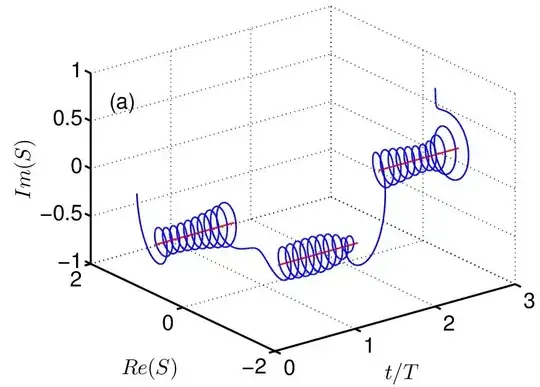It is
$$ S (t) = 1 - i g \int_0^t d \tau \left( \sum_{n=-M}^M e^{-i n (t- \tau )} \right) S(\tau) . $$
The kernel is the Dirichlet kernel. Numerical result is shown in the figure.
The $M\rightarrow \infty $ limit is easy (because the kernel reduces to a series of delta functions). In this limit, $S$ is a piece-wise constant function, illustrated by the red lines. But for a finite $M$, you will always get the fast rotation whose amplitude does not decay to zero in the limit of $M \rightarrow \infty $. Its amplitude converges to a finite value actually.
The purpose is not to get the analytical expression of $S $ (it might does not exist), but to understand qualitatively its behavior.
